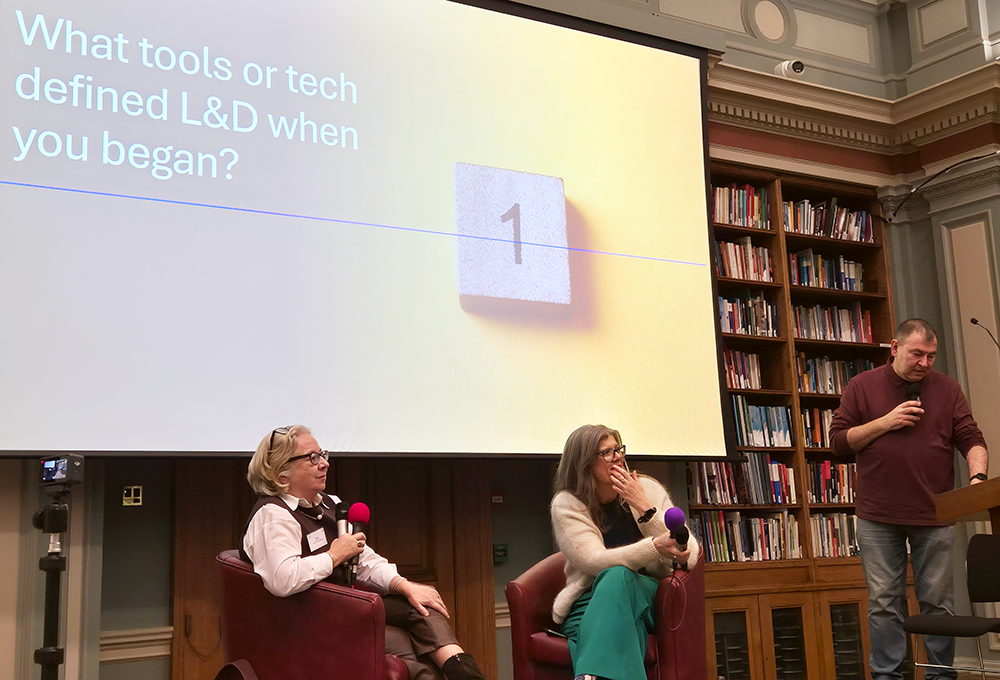In his third article in the series, Rob Hubbard looks at innovation in larger companies.
Reading time: 4 minutes.
It has been my great privilege to work with some of the largest companies in the world on learning technology projects on some of their toughest challenges and greatest opportunities.
I thought I perceived a linear inverse relationship between company size and ability to innovate; it appeared to me that the bigger the company the less agile and innovative it was able to be. Internal structures became overly complicated, the levels of process and red tape grew exponentially.
This seemed to make logical sense; smaller companies can be more nimble and responsive and therefore more innovative. Large companies are like super tankers with huge inertia of forward movement – it takes a massive amount of effort to turn them and so they struggle to be agile.
However, having worked with some even larger organisations with several hundred thousand employees, my understanding of the relationship of size to ability to innovate has become more nuanced. It’s less about size and more about culture, structures and mindset.
Many great innovations have come from outsiders.
Innovation is important to all areas of a business, but especially so to L&D. We are the function that empowers a company’s people to adapt and change. Through this we build our companies their competitive advantage. What can we learn from innovation in the wider context that we can apply to our work?
Here I’m going to share some of the approaches that I’ve seen work in large organisations to help them be more innovative. Note that these approaches are usually used in combination, not in isolation.
Set up an innovation team
A simple, logical approach is to set up a dedicated ‘Innovation Team’. Clearly this has some benefits; you can rapidly put a team in place and visibly start working on solving some of the organisation’s problems. You can recruit highly skilled people with track records of innovation and can look for innovators from within your organisation.
The downside is the possible perception from the rest of the organisation that innovation is the innovation team’s job alone, whereas in fact, innovation is now the job of every person in an organisation.
Great ideas can come from anywhere and quite often do, so innovation teams need to interface widely and deeply with the organisation so as not to become siloed and disconnected from the reality of work. Processes and ways of working need to be put in place to encourage and capture ideas from the wider organisation.
Cross functional innovation teams
Better than having a dedicated innovation team, is to form cross-functional teams to attempt to solve specific organisational problems. The ‘innovation expert’ takes the role of a facilitator in much the same way that L&D people now facilitate learning as the ‘guide on the side’ rather than the ‘sage on the stage’.
Cross-functional teams have the added benefit of encouraging ‘outsider thinking’ – this is where you engage with people who are not experts in the given field but from a related discipline. They know enough about the problem to contribute, however, aren’t constrained by established ways of thinking. Many great innovations have come from outsiders.
Take the example of Richard Drew. In the 1920s 3M sent him out to distribute sandpaper for testing in auto body repair shops. He watched as the auto workers used paper and heavy duty surgical tape to mask off parts of a car for painting.
When they came to remove the tape it would invariably pull off some of the newly-applied paint, leading to a great deal of swearing and the need to redo the job, costing time and money.
Instead of thinking ‘What a great opportunity to sell more sandpaper!’ instead he saw the need for a tape that was just sticky enough to mask what you don’t want to paint, but that could be easily removed. Over the coming years Drew went on to invent masking tape, going against senior management’s wishes at times to do it.
Innovation clubs
These are a way to capture ideas by encouraging them to bubble up from innovative individuals across the organisation. I know of a very large tech company who have an innovation club that any employee can join.
The club meets in the main office locations for a couple of hours every few weeks so hobby innovators can work together on possible innovations. Members are encouraged to submit ideas for products, services or improvements to do with anything related to the company’s business, whether directly associated to their role or not.
The ideas are reviewed by the innovation team, with many then having patents filed for them. Any that do, earn the inventor a £500 bonus. A few good ideas a year can add up to a few £thousand extra in your wage packet.
I like this, as it’s a ground-up approach to innovation and I believe that we’re all inventors at heart; the inquisitive primates that we are.
This piece will be concluded next week.
About the author
Rob is the founder and creative lead at LAS.




Good points Rob.
Good points Rob.
In my experience within large companies, and from conversations I have with my network it seems to be Risk that plays a major factor in companies not innovating. Risk, or fear, of failure and the consequences. Fear of raising head above everyone else and taking a gamble. But there are some examples of companies that address this and allow people to fail (learn) with no or little consequence.